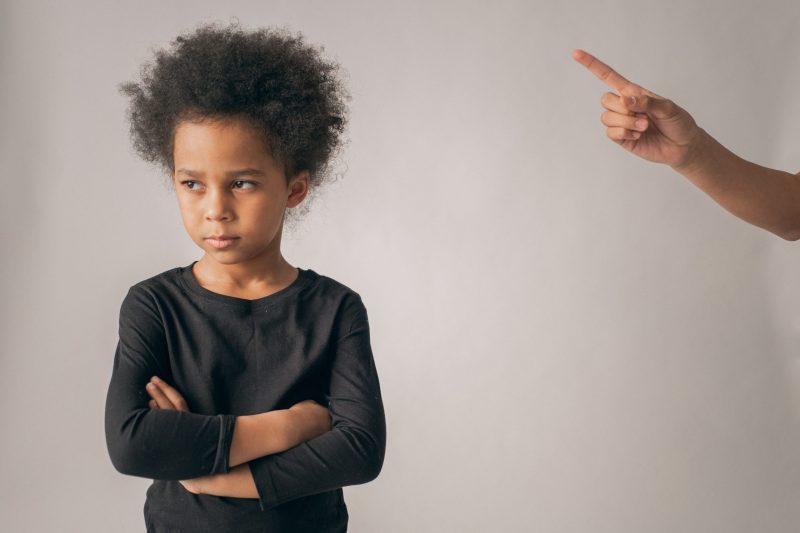Every parent wants their children to grow up normally and to become responsible citizens who can follow the rules and act appropriately. As a result, it appears normal for parents to be concerned when their children exhibit problematic behavior such as aggression, delinquency, and antisociality. It is challenging to identify and define child behavior problems since certain behaviors considered “problematic” are just age-appropriate and are frequently a part of normal child development (e.g., crying and temper tantrums).
Children’s behavior can be regarded as problematic when:
- the child is at risk of physical harm;
- the child’s functioning and development are hampered;
- there are concerns about an underlying medical condition (e.g., sensory impairment, intracranial pathology, etc.) or there is a suspicion of neurodevelopmental disorders including autism spectrum disorder, attention deficit hyperactivity disorder, anxiety or depressive disorders, and oppositional defiant or conduct disorders;
- parental issues with mental health or complex family dynamics are present;
- the daycare facility, kindergarten, or school is concerned or has difficulty coping with the child’s behavior; and
- the child’s actions are impacting the family’s ability to function.
It is estimated that approximately 12% of preschool to 12-year-old children in Australia, the United States, and Singapore display problematic behaviors. Even though most behavior problems are temporary, some reports say that as many as 50% of preschool behavior problems can become chronic and last into adolescence and adulthood. These include attention deficit hyperactivity disorder, oppositional defiant disorder, and conduct disorders, which are linked to drug abuse, family violence, and crime.
The Institute for Life Management Science (ILMS) has compiled definitions of children’s behavior problems from numerous scientific journals and defined children’s behavior problems as maladaptive acts conducted by children under the age of 18 that might cause injury or risk to the child, other children, adults, or living things, as well as damage to the physical environment, equipment, or materials, which can impair children’s development, learning, and connections with others.
This article will provide parents with research-based explanations on how children can develop problematic behaviors and gain awareness of the underlying child behavior and the reasons for problematic behavior.
Goals of misbehavior in children
All behaviors are intentional and elicited by a need for belonging. When children have a sense of belonging as equal and contributing family members, they fulfill their “desire to belong.” Children’s behavior is a cue that contains their interpretation of themselves, other people, and their role in the world. Their decisions about how to think, feel, and act is founded on these interpretations.
Understanding the purposefulness of behavior is very crucial for parents because children who do not feel significant in socially helpful ways acquire mistaken ways to meet their basic needs. Children typically misbehave or show problematic behaviors to attain one of these four goals:
Undue attention
Undue attention indicates children’s mistaken belief that they only belong if they can receive special treatment or attention from others. As a result of this mistaken goal, they expect excessive attention or service and strive to keep people busy with them. The craving for attention and the search for a sense of belonging in children leads to attention-seeking behavior.
Misguided power
Misguided power shows children’s mistaken belief that they only belong when they are in charge or “boss.” As a result, they act as if they are in a power struggle, displaying behaviors to demonstrate that no one can boss them around. Disobedience, defiance, stubbornness, lying, and aggression are examples of these behaviors.
Revenge
Children with the mistaken goal of revenge are hurt and believe they are unloved, insignificant, and rejected. As a result, they seek revenge and inflict harm on others. A child who seeks revenge frequently acts to harm others in order for people to realize how he or she was hurt. Revenge behaviors may include violence, defiance, and damaging property.
Assumed inadequacy
Children with a mistaken goal of assumed inadequacy believe they are inadequate and do not belong. Therefore they give up and retreat from social engagement, everyday life chores, or responsibilities. Pampered, overprotected children, as well as children with overbearing parents, display a sense of inadequacy. These children avoid striving, do not respond, and do not develop. Inadequacy is characterized as the most detrimental manifestation of discouragement and social interest loss.
Any behavior exhibited by children can be attributed to one of these four mistaken goals. It is important for parents to understand children’s mistaken goals so that they can guide the children toward healthy and socially acceptable ways to accomplish the goal — the need to belong.
The cause of problematic behaviors
There are various factors that might contribute to the development of behavior problems in children. The three causes described below can serve as a starting point for parents to avoid in order to prevent the emergence of behavioral problems in children.
Physical punishment
Physical punishment is widely seen as a type of violence that harms children. Physical punishment used by parents has been linked to increased child behavior problems such as hostility and antisocial behavior.
Children who were physically punished increased their problematic behavior much more than those who were not physically punished between the ages of 5-8 years. It is probable that caregiver modeling of physical punishment increased children’s reliance on physical violence and aggression as coping methods, as well as disturbed children’s attachment patterns, resulting in increased problematic behaviors and decreased prosocial behavior.
Physical punishment is most commonly utilized throughout early childhood, followed by middle childhood and adolescence. When parents or other caregivers use physical punishment, they simultaneously indicate to their child that aggression is appropriate and successful in changing the conduct of others. As a result, children internalize the notion that aggression is normal and prefer to mimic aggressive behaviors.
Parental psychological control
According to studies, parents who use psychological control on their children put their children in danger of developing problematic behaviors.
Parental psychological control was defined by manipulative and autonomy-inhibiting parental attitudes such as guilt-induction, humiliation, love withdrawal, and invalidation of the child’s perspective, all of which harmed the child’s individuality. Parental psychological control may not only stifle children’s ability to express themselves without fear of rejection or abandonment, but it may also impede the development of trust and reliance on others.
Parental psychological control affects adolescent aggressiveness via deviant peer affiliation, showing that experiencing psychological control from parents affects adolescents’ tendencies for aggressive behavior. Adolescents who feel more psychological control from their parents are more inclined to associate with deviant peers, which fosters aggressive behavior. Furthermore, adolescents who associate with deviant peers are more likely to engage in aggressive conduct as a result of acquiring behavior patterns through peer pressure, modeling, and norms.
Children’s temperament
Children’s temperament is made up of three components:
- negative affect (the general proclivity to experience negative emotions such as fear, anger, frustration, and sadness);
- surgency/extraversion (the proclivity toward social orientation, positive emotions, and motor activity); and
- effortful control (characteristic of inhibitory control and attentional focus as part of executive control and self-regulation).
A study found that negative affect had an independent and positive influence on problem behaviors. It is most likely because negative affect includes both emotions that are prone to inhibition (such as grief or fear) and emotions that tend to provoke hostility (i.e, anger and frustration).
Children with high negative emotionality, as well as those with an escalating negative emotionality pattern, later demonstrated heightened problem behaviors. On the other hand, children with the highest extraversion and regulating capacity have the lowest levels of problem behaviors. The studies revealed that children’s temperament traits can influence their behavior both positively and negatively.
In conclusion
There are no bad children; only those who express themselves improperly. It is a parent’s responsibility to assist their children in finding proper ways to express themselves. By knowing the fundamentals of children’s behavior and the causes of problem behaviors, parents may prevent children from developing problem behaviors and encourage them to develop positive ones.
If you would like to learn more about problematic behavior in children, visit the Parenting Science Labs. The lab uses the research of the Institute for Life Management Science to produce courses, certifications, videos, podcasts, and other learning materials. Check out the Parenting Science Labs today.
Photo by Monstera on Pexels


